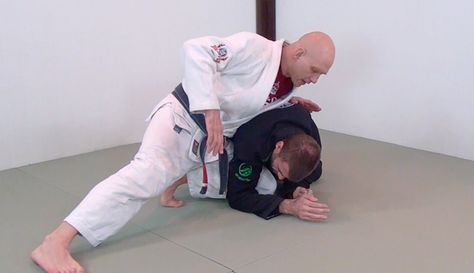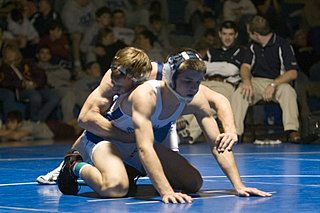This is part of a series of articles inspired by an interview with Matt Thornton. It is a collection common fallacious arguments and strategic errors regarding martial arts efficacy. From here on, when I write an assertion like, "X works," I mean:
- Substitute for "X" any specific martial art, system, or technique.
- "X" is generally applicable in a real fight.
Sins of Inclusion
One common complaint about Brazilian Jiu-Jitsu is that it should omit positions and techniques which are viable under BJJ competition rules, but are disastrous in self-defense. For a specific example, I'll pick on the turtle position.

My (limited) understanding is that the turtle position is even more prevalent in Judo, again due to competition rules. The bottom referee's position in wrestling isn't far off, either.

In a competition setting, if the rules require that the opponent submit (via a choke or joint lock) and prohibit striking, the turtle position doesn't look too bad!
But the turtle position can't be used safely beyond a momentary transition when striking and weapons are in the mix. Staying "turtled up" allows your opponent to do whatever they want: they have freedom of movement and they can easily attack your head and back. If your opponent is a school-yard bully who may stop at a punch in the mouth, maybe this'll work. Against a more committed attacker, though, the turtle position is basically an invitation: "Come hurt me more."
In computer security, there's a saying that's also applicable to all competitions involving self-defense skills:
When you build a system, you build the game that plays it.
It's critical to realize and recognize techniques that arise as artifacts of sport/competition rule-sets. If you're a martial arts instructor or defensive shooting instructor who advertises they'll import self-defense/fighting skill, you are obligated to point out these sport-artifacts every single time they come up during instruction or discussion, and encourage your students to do the same. When these artifacts will go unremarked over time, eventually your curriculum silently drifts away from self-defense. Novices will be unable to differentiate clearly between sport and fighting techniques, and over time they'll be senior students, then instructors themselves. Don't leave that discrimination to chance.
Competitions, even when the rules drift some from pure self-defense, are not only useful but critical to the maintenance and evolution of the fighting arts. On a personal level, I have much more confidence in skills I've performed repeatedly under pressure (e.g., competition, objectively scored testing) than those I've only performed under relaxed conditions. On a wider scale, ruthlessly competitive people to challenge and remake the techniques used in these competitions just because they want to win evolves the techniques we learn, practice, and teach to ever-higher standards. The Weaver Stance is just such a competition-inspired innovation. The combative trinity of Thai boxing, wrestling, and ground-fighting wouldn't be nearly so widely known without the no-holds-barred contests of the 1990s.
Comments powered by Talkyard.